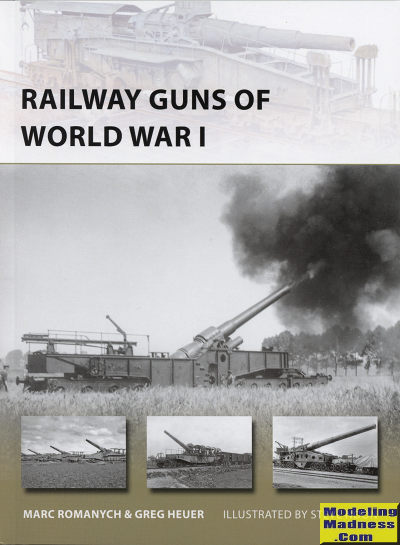 Frequently
rather far from our radar of war weapons is the Railway Gun. While I doubt if
any are still in active service anywhere, the peak of use of these was WWI. This
was due as much as the lack of fluid warfare as anything. With both sides on the
defensive and the semi-permanent situation of trench warfare, the two sides
could bring in heavy artillery that took days to prepare for and was impossible
to move on short notice.
Frequently
rather far from our radar of war weapons is the Railway Gun. While I doubt if
any are still in active service anywhere, the peak of use of these was WWI. This
was due as much as the lack of fluid warfare as anything. With both sides on the
defensive and the semi-permanent situation of trench warfare, the two sides
could bring in heavy artillery that took days to prepare for and was impossible
to move on short notice.
Not surprisingly, there was some pre-war development along these lines,
but most of it was ad hoc and based on current guns simply put on rail cars. The
US Civil War was probably the first use of these sorts of things and it was also
used in limited fashion in the other conflicts of the late 1800s and early
1900s.
Indeed, initial rail guns used in WWI were just as mentioned above. For
the most part, the guns themselves were extant pieces that were either removed
from coastal defense positions or were those used on ships.
At the forefront of development were the French, whose output of rail
guns exceeded those of all other fighting powers together. Some guns were so
powerful that the special mounts for them could not handle the stress. While the
French and British developed guns that were usually fired from the rails, German
guns were generally designed to be moved over fixed positions. In many ways the
German method was better as it provided the ability to operate the gun at
greater elevations and azimuths than those on the rail. In fact, most very large
guns were incapable of much if any azmuthal change so the firing areas had to be
curved to allow for a change. Even then, the tracks had to be reinforced as the
weight of these guns was extreme.
In this book, the authors have done considerable research to bring us
the story of these weapons. The book is divided into four major sections that
each cover a year of the war and the development of these guns during each year.
An overall look at the effectiveness, tactics and operations surrounding these
weapons systems is also provided. It makes for a fascinating read, especially
for those of us who know so little about it. A book I very much enjoyed reading
and can highly recommend to you.
August 2017
Copyright ModelingMadness.com. All rights reserved.
For more on the complete line of Osprey books, visit
http://www.ospreypublishing.com
If you would like your product reviewed fairly and
fairly quickly, please
contact
the editor or see other details in the
Note to
Contributors.
 Frequently
rather far from our radar of war weapons is the Railway Gun. While I doubt if
any are still in active service anywhere, the peak of use of these was WWI. This
was due as much as the lack of fluid warfare as anything. With both sides on the
defensive and the semi-permanent situation of trench warfare, the two sides
could bring in heavy artillery that took days to prepare for and was impossible
to move on short notice.
Frequently
rather far from our radar of war weapons is the Railway Gun. While I doubt if
any are still in active service anywhere, the peak of use of these was WWI. This
was due as much as the lack of fluid warfare as anything. With both sides on the
defensive and the semi-permanent situation of trench warfare, the two sides
could bring in heavy artillery that took days to prepare for and was impossible
to move on short notice.